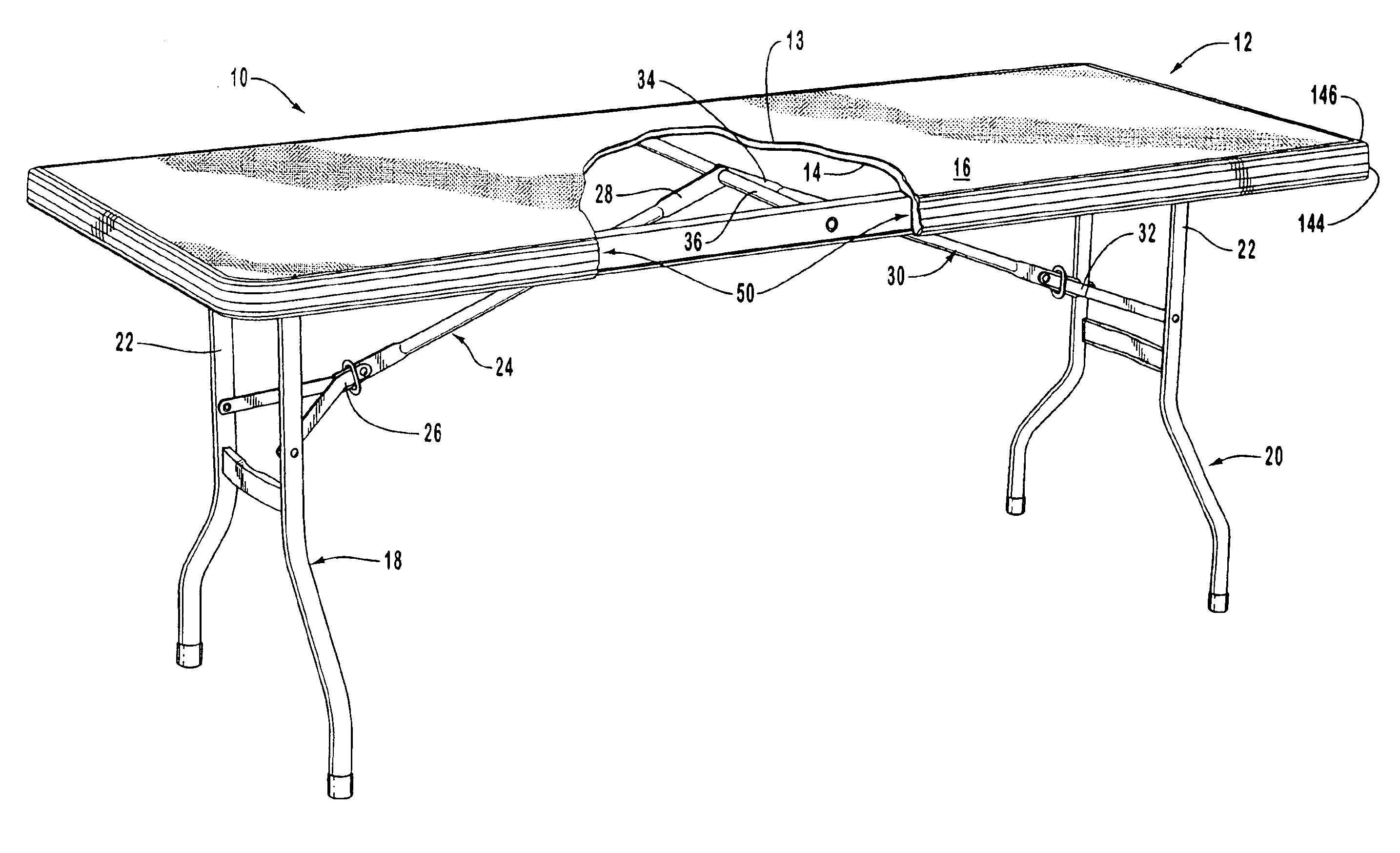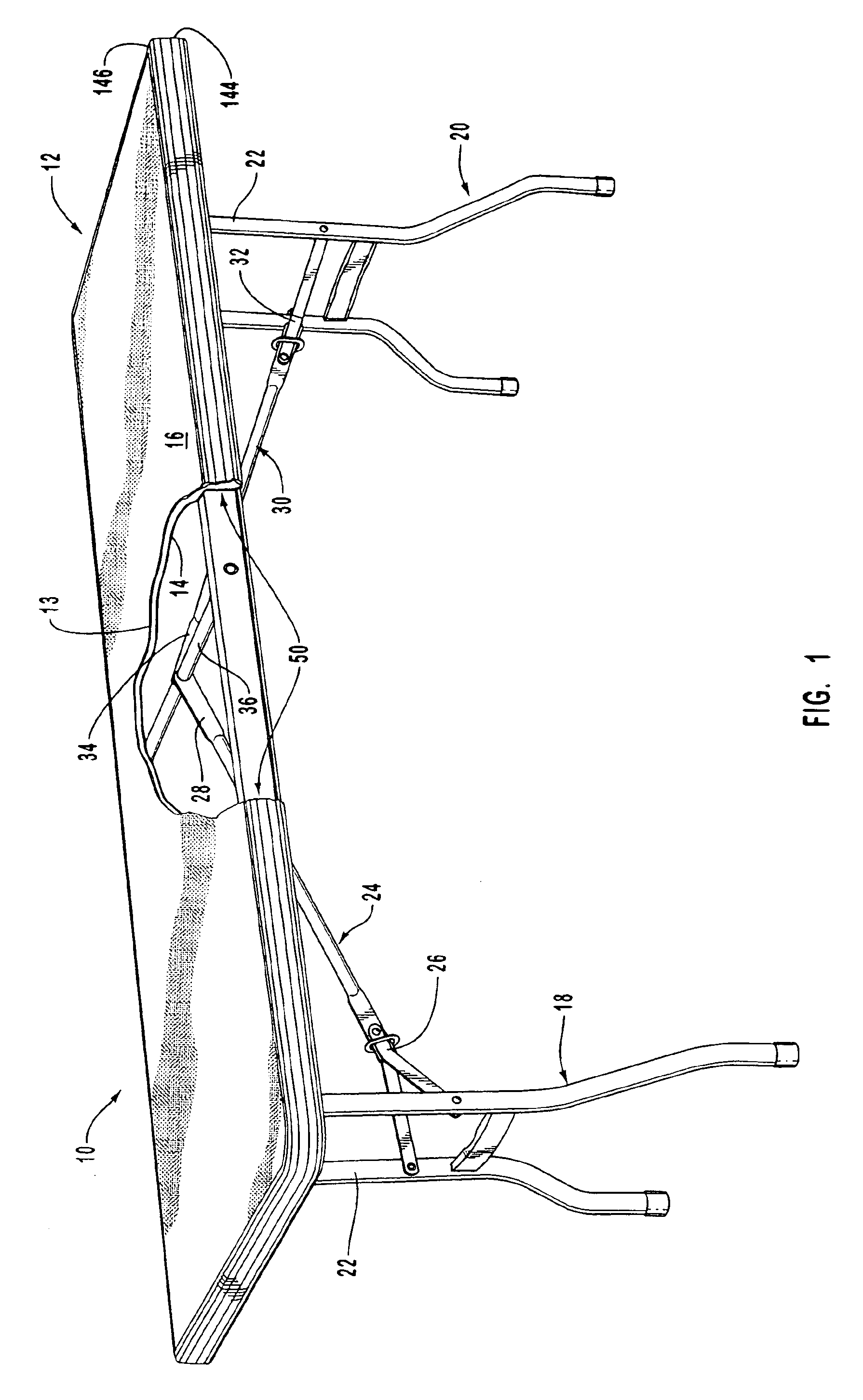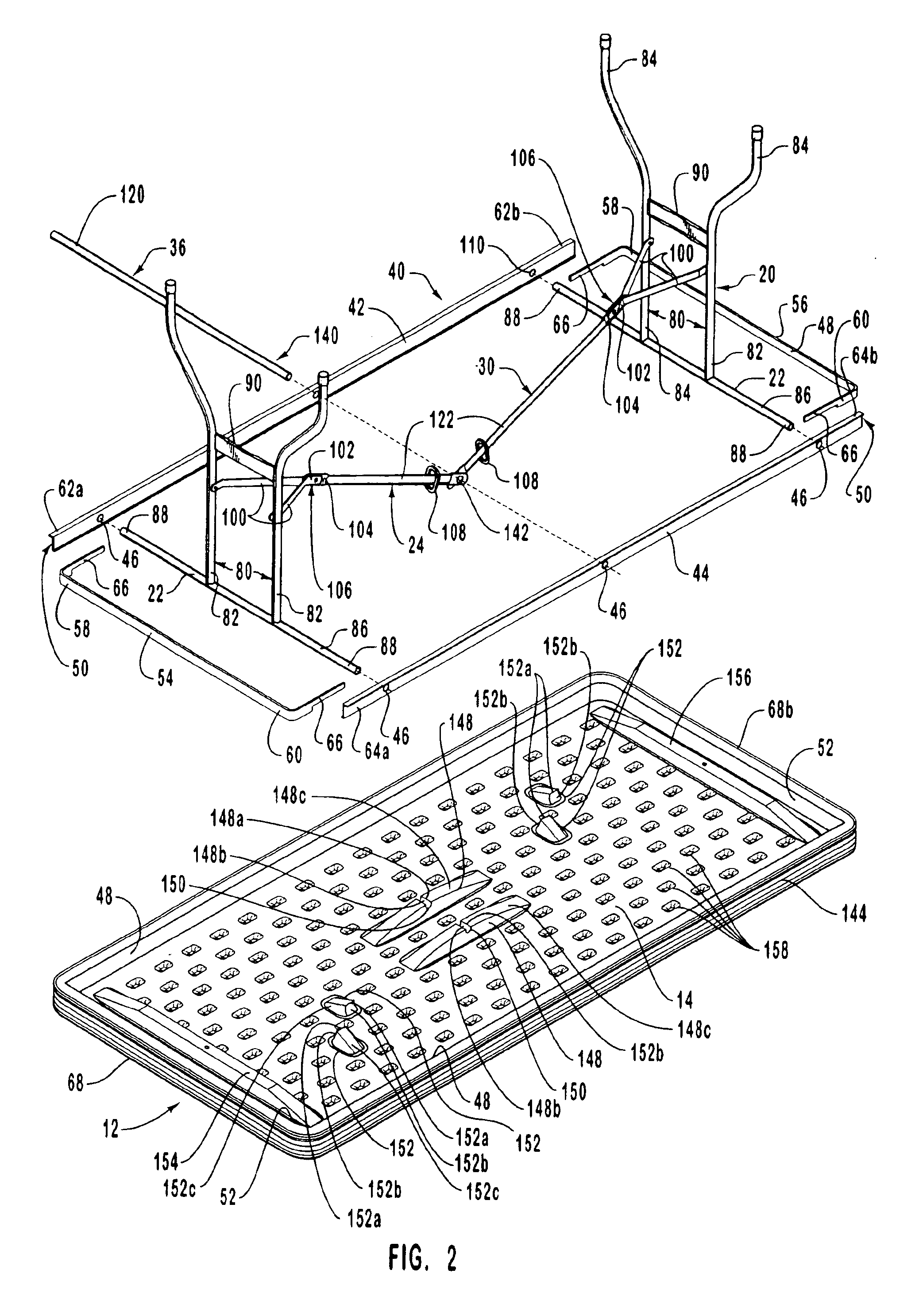Portable folding utility table with frame connected to integral lip
a folding utility table and frame technology, applied in the field of utility tables, can solve the problems of unwieldy tables, inconvenient use, and many of these lightweight utility tables lack the sturdiness of the prior art heavy-weight utility tables
- Summary
- Abstract
- Description
- Claims
- Application Information
AI Technical Summary
Benefits of technology
Problems solved by technology
Method used
Image
Examples
Embodiment Construction
[0033]It will be readily understood that the components of the present invention, as generally described and illustrated in the Figures herein, could be arranged and designed in a wide variety of different configurations Thus, the following more detailed description of the embodiments of the assembly and method of the present invention, as represented in FIGS. 1 through 5, is not intended to limit the scope of the invention, as claimed, but it is merely representative of the presently preferred embodiments of the invention.
[0034]The presently preferred embodiments of the invention will be best understood by reference to the drawings, wherein like parts are designated by like numerals throughout.
[0035]One presently preferred embodiment of the present invention, designated generally at 10, is best illustrated in FIGS. 1 and 2. As shown, with particular reference to FIG. 1, a utility table according to the present invention is generally designated at 10. The utility table 10 preferably...
PUM
| Property | Measurement | Unit |
|---|---|---|
| thickness | aaaaa | aaaaa |
| height | aaaaa | aaaaa |
| height | aaaaa | aaaaa |
Abstract
Description
Claims
Application Information
 Login to View More
Login to View More - R&D
- Intellectual Property
- Life Sciences
- Materials
- Tech Scout
- Unparalleled Data Quality
- Higher Quality Content
- 60% Fewer Hallucinations
Browse by: Latest US Patents, China's latest patents, Technical Efficacy Thesaurus, Application Domain, Technology Topic, Popular Technical Reports.
© 2025 PatSnap. All rights reserved.Legal|Privacy policy|Modern Slavery Act Transparency Statement|Sitemap|About US| Contact US: help@patsnap.com



